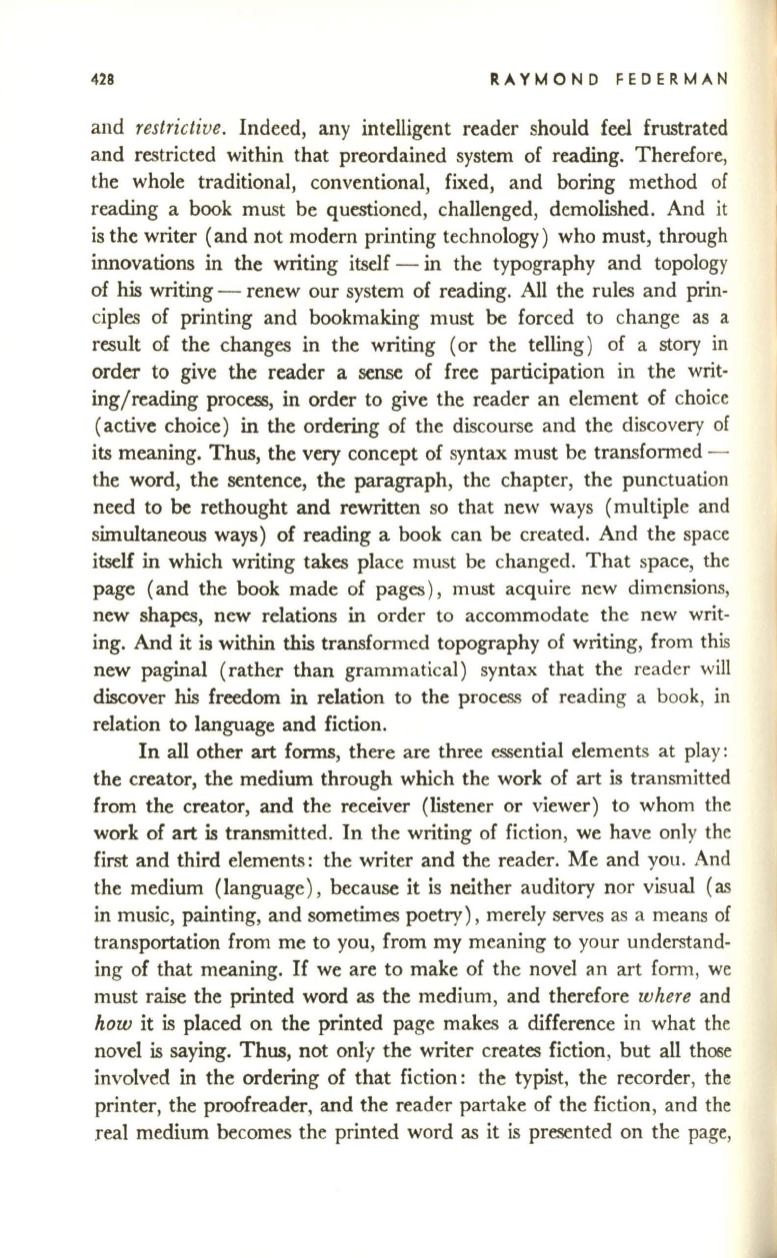
428
RAYMOND FEDERMAN
and
restrictive.
Indeed, any intelligent reader should feel frustrated
and restricted within that preordained system of reading. Therefore,
the whole traditional, conventional, fixed, and boring method of
reading a book must be questioned, challenged, demolished. And it
is the writer (and not modern printing technology) who must, through
innovations
in
the writing itself - in the typography and topology
of
his
writing - renew our system of reading. All the rules and prin–
ciples of printing and bookmaking must
be
forced to change as a
result of the changes in the writing (or the telling ) of a story in
order to give the reader a sense of free participation in the writ–
ing/reading process,
in
order to give the reader an element of choice
(active choice)
in
the ordering of the discourse and the discovery of
its meaning. Thus, the very concept of syntax must be transformed -
the word, the sentence, the paragraph, the chapter, the punctuation
need to
be
rethought and rewritten so that new ways (multiple and
simultaneous ways) of reading a book can be created. And the space
itself
in
which writing takes place must be changed. That space, the
page (and the book made of pages ), must acquire new dimensions,
new shapes, new relations
in
order to accommodate the new writ–
ing. And it is within this transformed topography of writing, from this
new paginal (rather than grammatical) syntax that the reader will
discover
his
freedom in relation to the process of reading a book, in
relation to language and fiction.
In all other
art
forms, there are three essential elements at play:
the creator, the medium through which the work of
art
is transmitted
from the creator, and the receiver (listener or viewer) to whom the
work of art
is
transmitted. In the writing of fiction, we have only the
first and third elements: the writer and the reader. Me and you. And
the medium (language ), because it is neither auditory nor visual (as
in music, painting, and sometimes poetry) , merely serves as a means of
transportation from me to you, from my meaning to your understand–
ing of that meaning.
If
we are to make of the novel an art form, we
must raise the printed word as the medium, and therefore
where
and
how
it is placed on the printed page makes a difference in what the
novel is saying. Thus, not only the writer creates fiction , but
all
those
involved in the ordering of that fiction: the typist, the recorder, the
printer, the proofreader, and the reader partake of the fiction , and the
real medium becomes the printed word as it is presented on the page,


